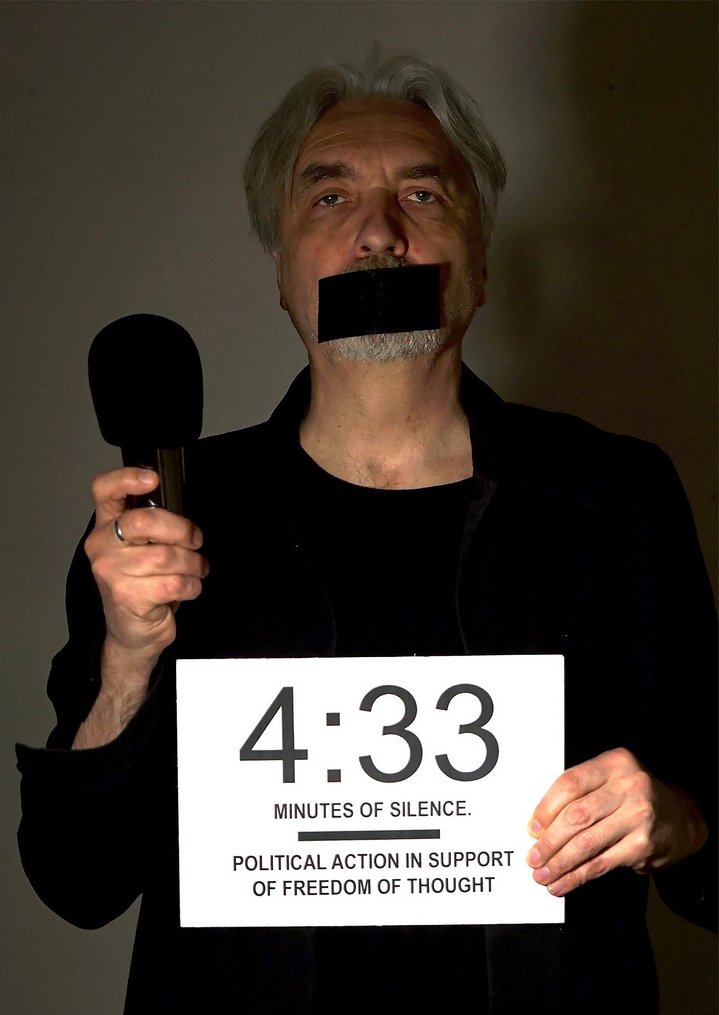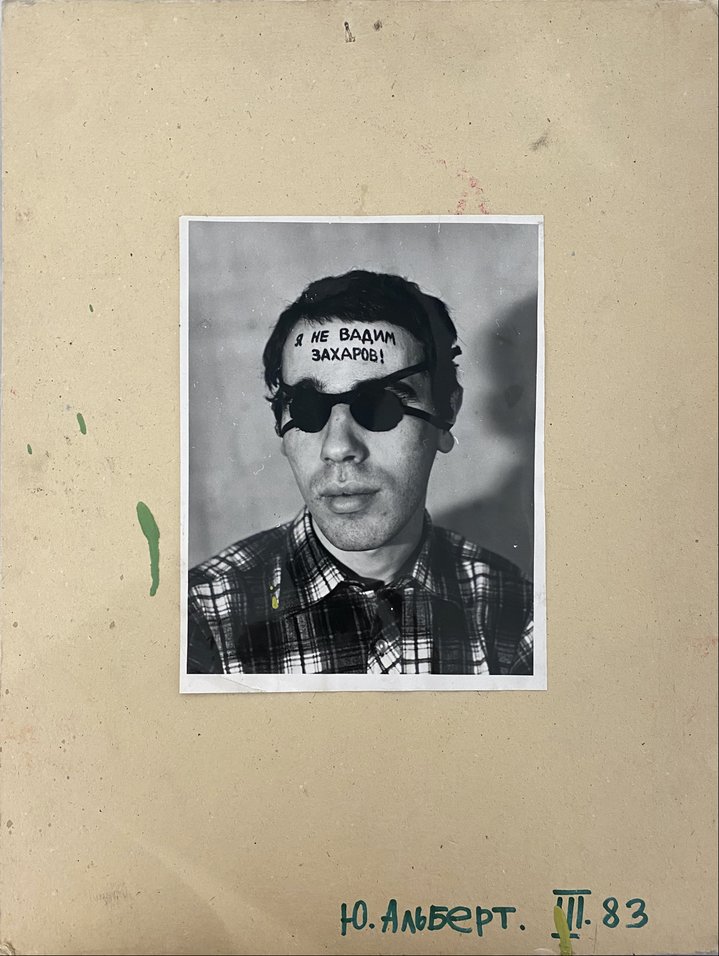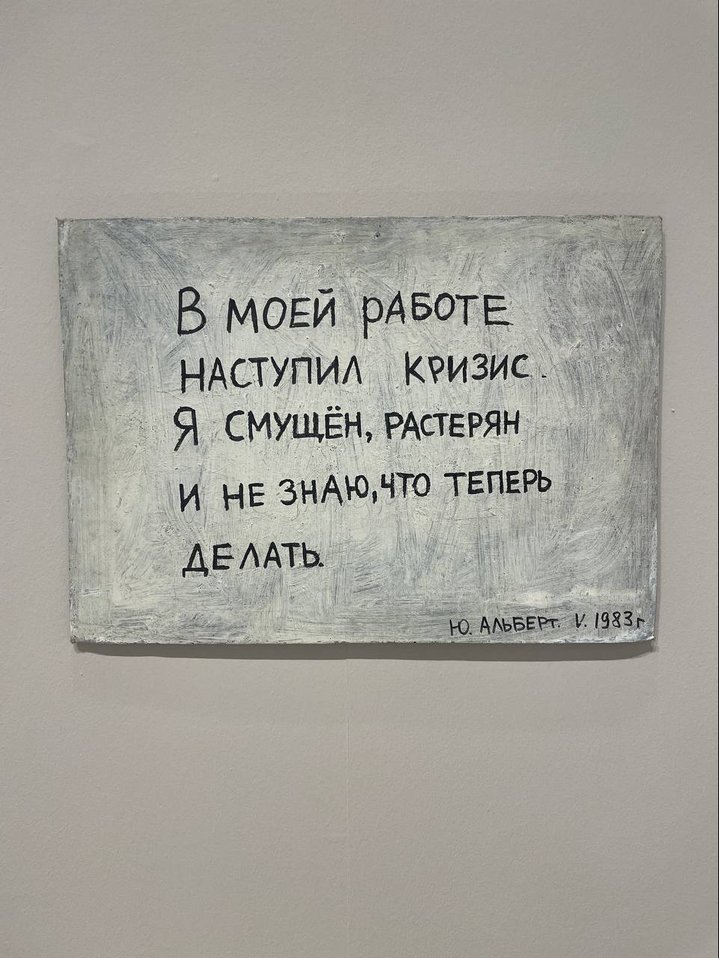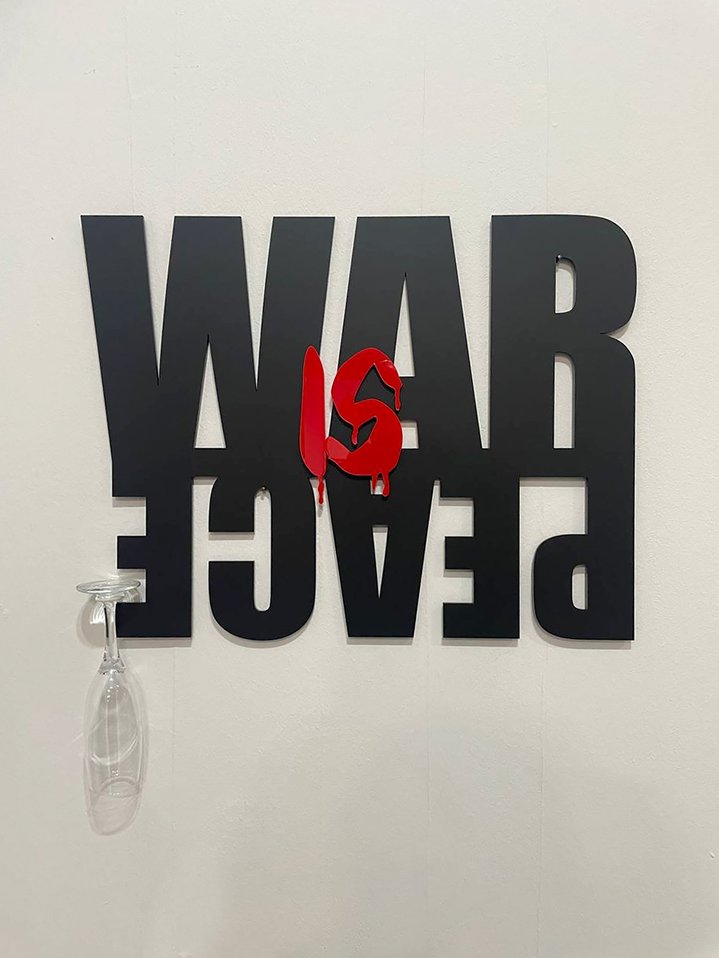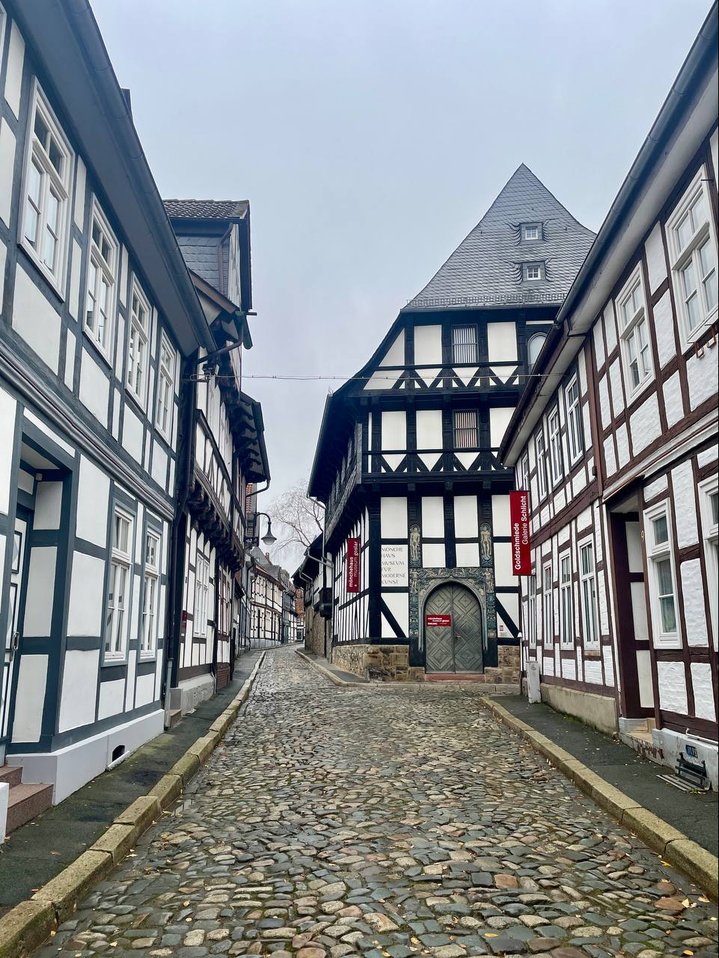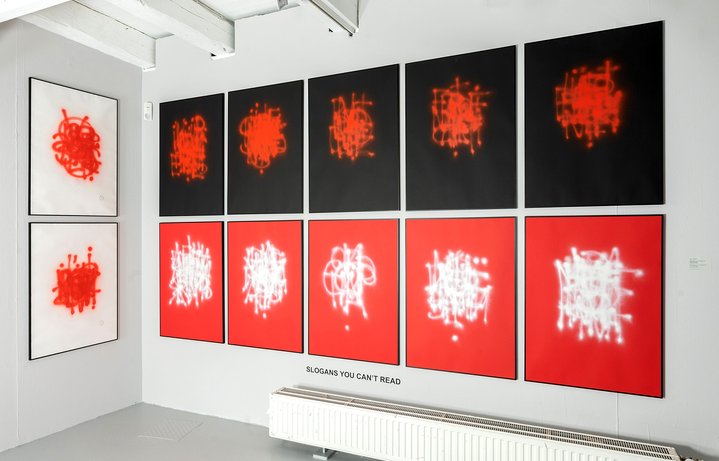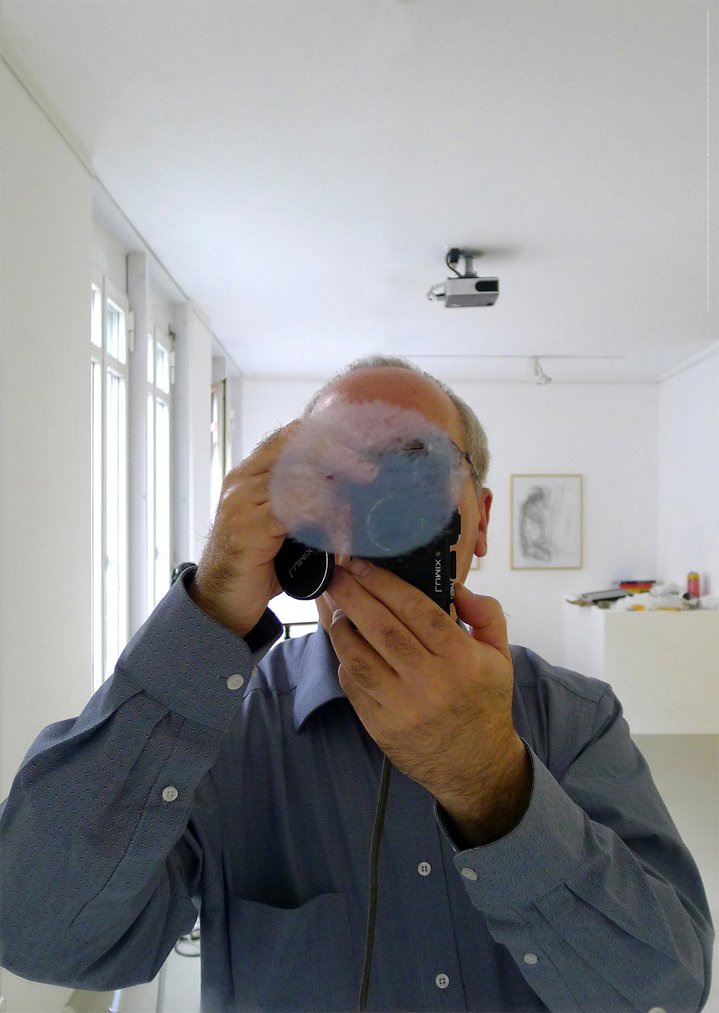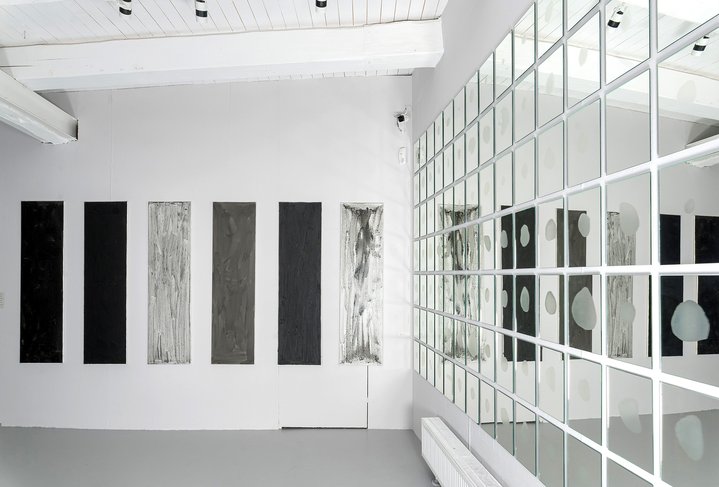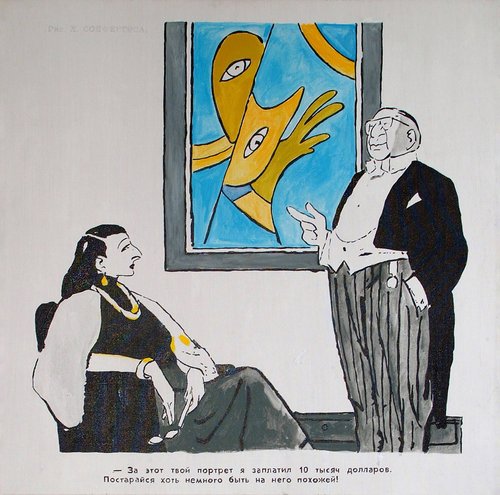Albert and Zakharov Win Prestigious German Prize
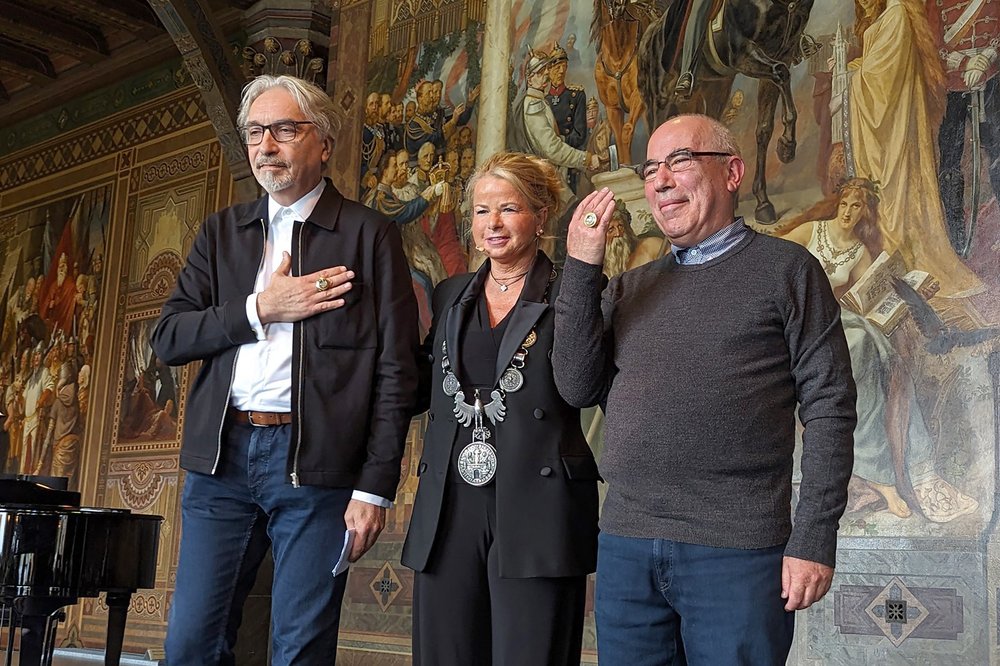
Presentation of the Kaiserring award to Yuri Albert and Vadim Zakharov on October 7th in the Goslar Imperial Palace with Mayor Urte Schwerdtner. Goslar, 2023. Courtesy of Goslar Town
Yuri Albert and Vadim Zakharov have both been awarded the Kaiserring prize, the first time two independent artists have received it at the same time and now there is a joint exhibition of their incisive work in the historic German town of Goslar.
Goslar is a small and inaccessible historical town nestling in the foothills of the Harz mountains. It may be a quiet nook today, but ten centuries ago it was the political heart of the Holy Roman Empire. Incredibly, Goslar’s splendid historical centre is intact, including the Kaiser palace and entire streets with half-timbered buildings, dating back to the 16th century and still in use today. There are wooden beams decorated with carving and painting, or whole walls covered in shingle, like the scales of a dragon.
You might think quaint, off-the-path Goslar an unlikely setting for cutting-edge contemporary art but it all started back in 1974 when local businessman and art enthusiast Peter Schenning first came up with the idea of a prize for the most prominent contemporary and modern artists. To this end, he founded the VFK, Verein Zur Förderung Moderner Kunst e. V., and in the following year the first Kaiserring was awarded to British sculptor Henry Moore (1888–1986). Since then, the prize has been awarded every year and has grown in stature to become one of the most prestigious art awards in Germany. Its current jury of twelve is made up of an equal mix of museum director curators and local representatives, from the town authorities and the VFK itself.
The Kaiserring prize itself is, as the name suggests, a ring. It is made by a local artisan from amethyst and engraved with the seal of Kaiser Heinrich IV and set in gold. Its name refers to when Goslar was designated a free imperial town under the rule of Kaiser Heinrich IV in 1081.
Kaiserring prizewinners enter a hallowed and symbolic contemporary art ´Who´s Who´ lineage. In 1976 the prize was awarded to Max Ernst (1891–1976) whose bronze bird-like construction made in 1964, Microbe vue a travers un temperament´ stands in the museum yard. Nearby there are oak trees planted by Joseph Beuys (1921–1986). Another striking work outside the museum is Ilya Kabakov´s (1933–2023) ‘Grandfather’s Shed’. Other noteworthy award winners also include Matthew Barney (b. 1967), Boris Mikhailov (b. 1938), Andreas Gursky (b. 1955) and Olafur Eliasson (b. 1967).
Inside the entrance to the museum there are rows of portraits of past prize winners and some of their works are still on permanent display in museum. The ground floor houses ‘Flying Shoes’ a work by Christian Boltanski (1944–2021), consisting of old shoes that the artist collected from locals in Goslar and hung from the ceiling, the tracks that people leave behind echoing a lingering presence of the past. A large 2008 photo by Andreas Gursky from his North Korean series hangs in the reception area. Some rooms and doorways have frescoes, the oldest, dating to 1561 in the mezzanine’s Apostle room, creating an interesting backdrop to an installation ‘Yin-Yang Conference’ (1992) by artist Rebecca Horn (b. 1944). This work consists of a set of mechanical mirrors and binoculars, moving on poles, which form fleeting visual alliances and cast specks of light onto walls.
Despite the aura of tradition surrounding the prize, evidently there is scope for some change as this year is the first time the prize has ever been awarded simultaneously to two artists, Yuri Albert (b. 1959) and Vadim Zakharov (b. 1959), both of whom are colleagues and long-standing friends, but not collaborators or part of an artist duo. And browsing past Ring winners, they are unusual in that their art practices are both exceptionally analytical, with a big emphasis on language and a deep questioning of preconceptions. Both artists played a prominent role in Moscow conceptualism and since perestroika have been living in Germany, Albert in Cologne, Zakharov in Berlin. They were both born in the same year, 1959.
The museum show covers the four and a half decades of their art practices, a gargantuan task especially sourcing the works from across several countries and from numerous art collections. On the first floor the curators set up a kind of dialogue between both artists. From the earliest days, they concentrated on were preoccupied with existential questions about art and our world, taking this to an extreme where the question itself becomes art. Like Albert´s 1978 photographic work ‘Y.F. Albert Gives All His Warmth to People’, a self-portrait holding a stenciled poster, and also his ‘Household Help’ from 1980, where Albert offers petty maintenance chores to be performed free of charge on such and such date, and then documents the process. Zakharov pushes forwards such a line of questioning in his 1983 work ‘Eye-Patch’, part of his celebrated ‘One-Eyed Artist’ series. During a two-year long performance, the artist played at alienating himself, where he would become a recognizable persona in specific settings. In this kind of piece he probed his own perceptions and those of the people who encountered him.
While searching for a good question can be art in itself, sometimes answers can also be visualized. Zakharov’s 2021 work ‘Slogans That Can’t Be Read’ and his ‘Icons of Hell. 700 Portraits of Dictators on 700 Gold Pages’ are palimpsests of overlapping letters and images, which together create the impression of an abstract painting. The same is true of Albert’s 2012 ‘Art for the Blind’ where black slates with Braille dots are to be perceived by using your fingers, or his ‘My Favourite Books’ series (2001–2003), monochrome paintings made using the ashes from books which have been burnt.
Each artist also has his own dedicated floor, Zakharov on the second and Albert on the third. Despite having much in common, the questions they both ask through their work are of course quite different. Vadim Zakharov shows a set of costumes titled ‘The Ideological Defile. After Me-ti. Book of Interventions in the Flow by Bertold Brecht’, with Maria Porudominskaya, and documentation relating to his ‘Danaë’ performance/installation. Curated by Udo Kittelmann, this work was shown in the Russian Pavilion at the Venice Biennale ten years ago. In spring 2022, Zakharov protested in front of the Russian Pavilion against Russia´s aggression towards Ukraine earlier the same year and documentation about this performance is also on view in the exhibition.
In his search for a good question Yuri Albert created ‘Poll’ (2009/2018), which on the one hand is a dialogue with ‘MoMA Poll’ by Hans Haacke (b. 1936), on the other, a direct dialogue with his audience. The questions here are about perception, and the voting itself makes no more sense than burning novels to make paint. It is in the mind of the viewer that sense is being generated, which transforms the work into a Zen kōan, while being a commentary on it at the same time.
As you exit the show, what you are left with is this restless paradoxical approach to reality full of doubting and probing, something that would be useful in the contemporary world. It is the stance itself rather than the making of an object which is important and the jury´s choice this year serves as a reminder of this.
Yuri Albert, Vadim Zakharov. Kaiserring of Goslar Town
Goslar, Germany
7 October 2023 – 28 January 2024






